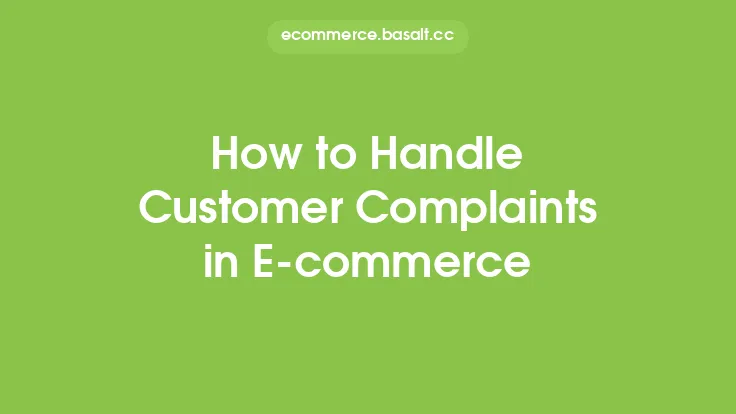Handling customer complaints and feedback is a crucial aspect of e-commerce customer service. It's an opportunity to showcase a company's commitment to its customers, resolve issues, and build trust. In today's digital age, customers have numerous platforms to express their opinions, and a single negative review can have a significant impact on a business's reputation. Therefore, it's essential to have a well-structured approach to handling customer complaints and feedback.
Understanding the Importance of Customer Complaints and Feedback
Customer complaints and feedback are invaluable sources of information for e-commerce businesses. They provide insights into the strengths and weaknesses of a company's products, services, and overall customer experience. By listening to customer complaints and feedback, businesses can identify areas for improvement, make data-driven decisions, and implement changes to enhance customer satisfaction. Moreover, responding to customer complaints and feedback demonstrates a company's dedication to its customers, which can lead to increased loyalty, retention, and positive word-of-mouth.
Types of Customer Complaints and Feedback
Customer complaints and feedback can be categorized into different types, including:
- Product-related complaints: issues with product quality, functionality, or performance
- Service-related complaints: problems with order fulfillment, shipping, or customer support
- Policy-related complaints: concerns with return, refund, or exchange policies
- Feedback: suggestions, comments, or opinions about a company's products, services, or overall experience
Understanding the types of customer complaints and feedback is essential to develop effective strategies for addressing them.
Strategies for Handling Customer Complaints
Handling customer complaints requires a structured approach that ensures timely, effective, and personalized responses. Here are some strategies for handling customer complaints:
- Respond promptly: acknowledge customer complaints and respond within a reasonable timeframe
- Listen actively: pay attention to customer concerns, ask questions, and clarify issues
- Empathize: show understanding and apologize for any inconvenience caused
- Offer solutions: provide alternatives, refunds, or replacements, depending on the situation
- Follow up: ensure that the issue is resolved and the customer is satisfied
Strategies for Handling Customer Feedback
Customer feedback is a valuable resource that can help e-commerce businesses improve their products, services, and overall customer experience. Here are some strategies for handling customer feedback:
- Collect feedback: use various channels, such as surveys, reviews, and social media, to collect customer feedback
- Analyze feedback: identify patterns, trends, and areas for improvement
- Prioritize feedback: focus on the most critical issues and suggestions
- Implement changes: make data-driven decisions and implement changes to enhance customer satisfaction
- Communicate changes: inform customers about the changes made and the impact of their feedback
Tools and Technologies for Handling Customer Complaints and Feedback
There are various tools and technologies available to help e-commerce businesses handle customer complaints and feedback, including:
- Customer relationship management (CRM) software: to manage customer interactions, track complaints, and analyze feedback
- Helpdesk software: to manage customer support requests, assign tasks, and track resolutions
- Social media monitoring tools: to track customer conversations, respond to complaints, and collect feedback
- Survey and feedback tools: to collect customer feedback, analyze responses, and identify areas for improvement
Best Practices for Handling Customer Complaints and Feedback
Here are some best practices for handling customer complaints and feedback:
- Be proactive: anticipate and prevent issues whenever possible
- Be transparent: provide clear and concise information about products, services, and policies
- Be responsive: respond promptly to customer complaints and feedback
- Be empathetic: show understanding and apologize for any inconvenience caused
- Be consistent: ensure that customer complaints and feedback are handled consistently across all channels and touchpoints
Conclusion
Handling customer complaints and feedback is a critical aspect of e-commerce customer service. By understanding the importance of customer complaints and feedback, categorizing them, and developing effective strategies for handling them, businesses can enhance customer satisfaction, build trust, and drive loyalty. By leveraging tools and technologies, and following best practices, e-commerce businesses can create a positive customer experience, increase retention, and ultimately drive growth and success.





